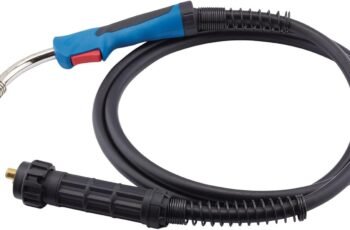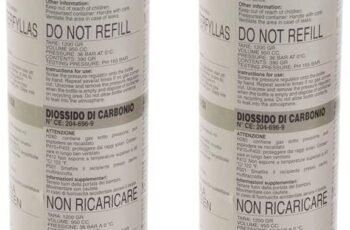Ad Blocker Detected
Our website is made possible by displaying online advertisements to our visitors. Please consider supporting us by disabling your ad blocker.
When considering welding machines, you’ll find that no single type fits every task. MIG machines offer versatility, making them convenient for various projects. TIG machines deliver precision and high-quality welds for detailed work. Stick welders, known for their ruggedness, are perfect for repairs and off-grid jobs. Flux-cored machines shine in challenging outdoor environments. Each type presents unique advantages and limitations, so exploring these differences can guide you to the right choice.
MIG Welding Machines: Features and Benefits
When you’re looking for a versatile welding solution, MIG welding machines stand out due to their ability to handle multiple processes like MIG, TIG, Stick, and flux-cored welding all in one unit. You’ll appreciate the seamless switching between these processes without the hassle of reconfiguring machines. These machines also support various metal transfer modes, including pulsed MIG, making them ideal for welding steel, stainless steel, and aluminum. Single phase entry level machines are designed with DIY users in mind, offering high portability and affordability while being suitable for welding mild steel wire. Advanced arc control characteristics allow you to adjust power settings infinitely, ensuring precise, consistent welds. With high-speed welding, continuous wire feed, and minimal post-weld cleanup, you can boost productivity while reducing waste. Automatic parameter settings further streamline operations by adjusting voltage and wire feed speed, making your workflow smooth and efficient.
TIG Welding Machines: Precision and Quality
Exploring further into the realm of welding machines, you’ll find that TIG welding machines are your go-to for precision and top-notch quality. With features like AC balance control and adjustable AC frequency, you can fine-tune your arc for the perfect weld. Whether you’re dealing with thin or thick materials, gas-shielded options using argon or helium ensure clean, stable arcs. The machines’ pulse settings and high-frequency micro start mean you’re in charge of the heat and arc initiation, avoiding tungsten contamination. Modern TIG systems offer AC/DC capabilities and multiprocess functionality, making them versatile for various materials. With these precision controls and advanced features, TIG welding machines deliver the quality results you’re aiming for. Notably, the iWave system exemplifies this versatility by accommodating all welding processes in one system, including TIG, MIG/MAG, MMA, and CEL welding.
Stick Welding Machines: Durability and Versatility
Although TIG welding machines are renowned for their precision, stick welding machines stand out for their durability and versatility.
With a compact design weighing just 6 kg, these machines are easy to transport, making them perfect for fieldwork. They offer compatibility with both 110V and 220V power sources, and you can even operate them off-grid using batteries or generators. Many models, such as the STi 160 Stick Welding Machine, also feature dual fan technology for optimized cooling and an extended lifespan.
Stick welders boast rugged construction to endure harsh environments, supported by military-grade IGBT technology. They provide a stable arc with constant current output, and their multi-process capability includes Lift TIG for precision tasks.
Compatible with various electrodes, stick welders handle a range of materials, making them ideal for repairs, shipboard installations, and farm maintenance, all while simplifying your workflow with intuitive controls.
Flux-Cored Welding Machines: Adaptability and Efficiency
Flux-cored welding machines offer unmatched adaptability and efficiency, making them a preferred choice for many welding tasks. You’ll appreciate their portability and ability to function without external shielding gas, especially for on-site jobs. They excel in outdoor environments like construction and shipbuilding, working effectively in extreme temperatures. With a high-speed performance that deposits up to 25 pounds of filler metal per hour, these machines triple the output of MIG welders. They work well on contaminated surfaces and handle various materials, including carbon steel and cast iron, which makes them ideal for machinery repairs. Although they require ventilation due to toxic fumes and post-weld slag removal, their ease of use, compatibility with 120V systems, and versatility outweigh these challenges. FCAW is suitable for projects like shipbuilding, underwater welding, and water tank repairs, making it highly effective for materials no thinner than 20 gauge.
Conclusion
In choosing a welding machine, consider what suits your specific needs. MIG machines offer versatility and portability for DIY enthusiasts. TIG machines are your go-to for precision and high-quality results. If you need something rugged and compact for repairs, stick welding is your best bet. For outdoor projects without shielding gas, flux-cored machines deliver efficiency and adaptability. Evaluate your projects and environments, then pick the machine that aligns with your goals and makes your welding tasks easier.



